
Quentin Roosevelt, son of Theodore Roosevelt and his second wife Edith, was shot down by German planes during aerial combat over France on July 14, 1918, northeast of Paris between Château-Thierry and Reims.
Quentin and his brothers Ted Jr., Archie and Kermit all served in WWI. Ted Jr. would later be the oldest American soldier and highest ranking officer to land by sea in Normandy (Utah Beach) on D-Day June 6, 1944. He died of a heart attack five weeks into the invasion. Quentin was originally buried in the village of Chamery, where his plane crashed. The two brothers are now buried side by side at the Normandy American Cemetery above Omaha Beach.
In this exclusive France Revisited interview, Christiane Sinnig-Haas, author of a forthcoming book about Quentin Roosevelt, tells about “the most famous American victim of the First World War” and how, after becoming director of the Jean de La Fontaine Museum in Château-Thierry, she became interested in Quentin’s life.
[This interview was conducted in 2012. In 2015 Château-Thierry inaugurated the Maison de l’Amitié France-Amérique on Place des Etat-Unis. The building houses the tourist office, an exhibition space that speaks of the life and death of Quentin Roosevelt and a “mini-school” offering English classes for children.]
[Cliquer pour la version originale française de cet entretien.]
France Revisited: How did you come to be interested in Quentin Roosevelt?
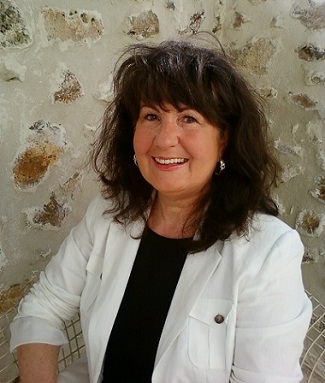
Christiane Sinnig-Haas: I came upon Quentin Roosevelt by chance, as is the case with many encounters. His story is tied to the history of the First World War in the Chateau-Thierry region. I discovered the tragic destiny of Quentin Roosevelt when I took over as director of the Jean de La Fontaine Museum of Chateau-Thierry, which is also a Maison d’Ecrivain [Writer’s House].
I had just finished a book about a great contemporary Chinese writer Ba Jin who lived in Château-Thierry in the 1920s and whom the city wanted to honor when a friend took me to Chamery to the site where Quentin’s plane crashed on July 14, 1918.
The City of Château-Thierry also held a series of events and exhibitions in honor of the memory of Quentin Roosevelt in 2010.
In doing research about Quentin I discovered that he had left numerous letters telling about his short life before and after his arrival in France where he enlisted as a volunteer. He had inherited from his father, President Theodore Roosevelt, a taste for writing. In 1921 his brother Kermit published a selection of Quentin’s letters. Reading between the lines one discovers the portrait of the extremely likable and brilliant young man that was Quentin.
I traveled to Harvard, to Sagamore Hill [home of Theodore Roosevelt and family] and to Washington to better understand the reality of his daily life. It’s through his letters and through the archives maintained by the family that I entered into the world of Quentin Roosevelt.
Another decisive encounter was my meeting Richard Derby Williams and his wife Mary. Richard Derby Williams, grandson of Quentin’s sister Ethel to whom he was very close, attaches, as does the entire Roosevelt family, great significance to paying homage to Quentin’s sacrifice, and he was extremely positive about this project in English. He knows Château-Thierry well and has become friends with those here who honor and maintain the memory of Quentin. His grandmother Ethel Roosevelt Derby, guardian of the family memory, had established a friendship with a couple of teachers from the area, the Corets, who perpetuated the celebration of Memorial Day at Quentin’s tomb in Chamery, part of the commune of Coulanges-Cohan since 1954.
These warm relations have been perpetuated by her grandson and family, the Theodore Roosevelt Association, local authorities, the City of Château-Thierry, and the Aisne-Marne Cemetery at Belleau Wood.
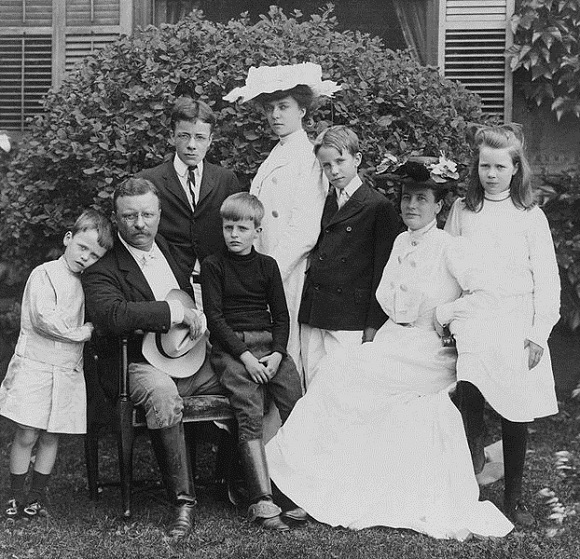
FR: Quentin Roosevelt was the youngest son of President Theodore Roosevelt and is often described as being his favorite. Why?
C.S-H.: As his name indicates, Quentin was the fifth child of Theodore and Edith Roosevelt. His half-sister Alice and his mother Edith often remarked that he was undoubtedly the most talented of the President’s children and that he possessed a strong sense of humor.
At a young age he showed himself to be very bold and reckless and to have little physical inhibition, which frightened his parents. Intelligent, full of joie de vivre, direct, sensitive and inventive, he was a born leader, as can be seen early on in episodes of the White House Gang which delighted the press and the American public. The president attached great importance to the development of Quentin’s sense of responsibility and principles and channeled this spirit that he recognized in himself.
He was an excellent student whose interest in reading and writing were encouraged by his parents.
Theodore Roosevelt nourished high ambitions for Quentin in whom he might have seen a potential political heir. He shared his father’s traits both physically and intellectually, and Theodore didn’t fail to notice that Quentin had a certain charisma.
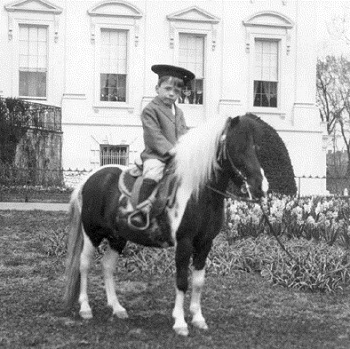
While a student at Harvard, Quentin became the epistolary confidant of his father who shared with him his opinions particularly regarding domestic and international politics. Like the president, he was charming and full of energy; he was sincere and applied the principles in which he believed.
Quentin had an absolutely limitless admiration for his father, whom he adored.
FR: Where did Quentin’s passion for flying come from and how did he become a pilot?
C.S-H.: Quentin surprised his friends and family early on with his strong attraction and innate talent for mechanics, which was both a passion and a gift.
In August 1909, during a family journey in Europe, he was struck by the beauty of an aerial show in Reims, which was for him a revelation. He was almost 12 years old. He returned to the region in 1918, as a pilot enlisting voluntarily to meet his destiny.
Poems that he wrote at a young age reveal his fascination with aviation, mechanics and engines. His enthusiasm for experiences involving mechanics wasn’t always shared by the family. While a student at Harvard he considered completing his degree at MIT and said that he wanted to become a mechanical engineer.
Theodore Roosevelt, for his part, understood very early on the strategic importance that aviation was going to have in the European conflict, especially after the first Battle of the Marne. He had written articles on the subject and Quentin was well aware of them.
In 1917, when the United States entered the war, Quentin, then at Harvard, immediately informed his parents of his decision to enlist in order to become a fighter pilot, despite problems with his back and his sight. His father gave his support and totally adhered to his decision.
Before leaving for France in July, Quentin was trained at the Mineola Aviation School then completing his training in France.
In 1917 the American army had less than one hundred trained pilots, and the manpower needs for the conflict in Europe were enormous.
FR: How did his father, a former president, feel about his son going to war?
C.H-S.: It’s undeniable that Theodore Roosevelt’s personality and ideas definitely marked the choices of his sons and of his entire family.
Theodore Roosevelt’s political perceptiveness concerning the conflict and the worldwide situation in Europe were remarkable. With premonitory insight he warned his countrymen of the economic and strategic dangers of a German victory for Europe as well as for the United States. He was convinced very early on of the necessity for the United States to get involved in Europe. The attitude of his successor in the White House, Woodrow Wilson, and of the latter’s refuge behind political neutrality—which enabled Wilson’s reelection in 1916—distressed Theodore Roosevelt.
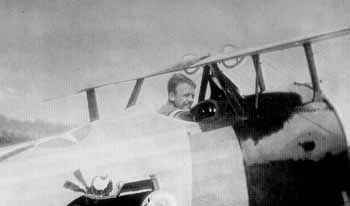
Roosevelt early on sought to convince the American people that Wilson’s non-interventionist attitude and his pacifism were reprehensible; he called President Wilson a coward.
To Roosevelt, the United States’ entrance into the conflict in 1917 came very late and he considered the country to be unequipped and that a lot of time had been lost. (As early as 1914, Quentin’s sister Ethel, a nurse, had accompanied to France her husband Richard Derby, a surgeon voluntarily enlisted to work at the American Hospital in Paris.)
President Wilson’s refusal to allow Theodore Roosevelt (“Colonel” Theodore Roosevelt) to enlist, despite the insistence of allies who believed that his presence would have a positive effect on troop morale, left a bitter taste in the former president’s mouth since he was well-known and popular in Europe. His sons, he said, were his pride and his substitution due to the prohibition against being on the front in Europe himself.
In June 1917, his sons Ted and Archie sailed to France and Kermit for Mesopotamia (now Iraq). On July 23, 1917, Quentin sailed for France. For the entire family, participating in the war effort was a question of honor.
FR: What’s known of Quentin’s last dogfight?
C.S-H.: Quentin’s squadron, the 95th Pursuit Squadron, along with 94th Pursuit Squadron were the first American fighter plane squadrons.
On July 14, 1918, the situation in the Chateau-Thierry sector was extremely dangerous. German aviation had very strict orders to prevent any observation and reconnaissance attempts—the great German “Friedensturm” offensive was planned for the following day, July 15. The German commander had given orders to totally neutralize any observation flights along the front line.
On July 14, Quentin’s unit, based at Saints near Château-Thierry, took off early in the morning under the command of Lieutenant Edward Buford. The squadron’s mission was to fly cover for an observation plane of the 88th that would take photos behind the front line The photos were taken and the observation plane headed back to base when German Fokkers appeared. The formation of five American planes that had gone over the front line found themselves faced with a formation of seven German Fokkers.
Confronted with so many enemy planes, Lieutenant Buford decided to cease combat and to bring the unit back behind the lines. The weather was cloudy and windy and visibility wasn’t good. Between cloud layers, Lieutenant Buford caught sight of a Nieuport in difficulty being attacked by three Fokkers. It had apparently been hit. The dogfight lasted five to six minutes. Quentin had thrown himself into combat, undoubtedly the victim of his own great boldness, his bravery and his lack of fear, convinced that he was doing the right thing.
At the same time it was raining in Paris and the allies were parading down the Champs-Elysées for the July 14 French national holiday, Bastille Day.
Quentin was signaled as missing when the other airplanes returned to base. He had been shot down and had crashed in Chamery, in the German zone.
Quentin had deplored the superiority of the new design of the German Fokkers over the older American Nieuports in his letters and had noted the problems of being underequipped that his father had predicted at the start of the conflict.
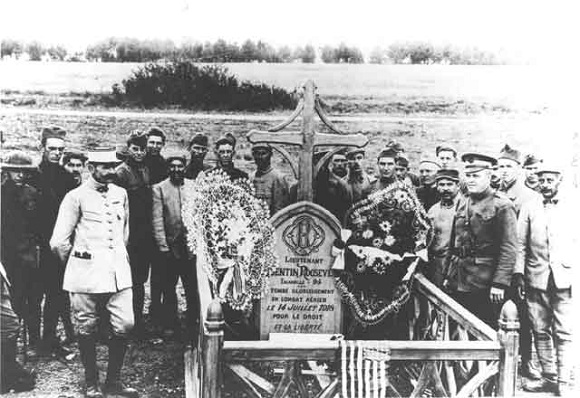
FR: Quentin’s plane crashed on the other side of the front. The Germans buried him and, conscious that he was the son of a former American president, immediately informed the French military. What’s known about the reaction of the German and the French authorities to his death?
C.S-H.: News of Quentin’s death shocked the entire world. The press everywhere told of his sacrifice, and his courage was saluted unanimously. The Roosevelt name was known and respected by the French as well as by the Germans, both civilians and the military.
On July 15 he was buried in Chamery, a little village in the department of Aisne, at the place where his plane had crashed. An eyewitness described an impressive honor guard of German soldiers giving him military honors at the site.
In keeping with tradition, the broken blades of the propeller and the buckled wheels of his plane marked the site of his tomb surmounted by a wood cross.
A photo of his remains next the plane was taken by the German military. Its use as propaganda to lift troop moral quickly turned out to be extremely counterproductive among both civilians and the German army. It was even quite demoralizing for the troops. The comparison of the courageous son of the former American president dead in aerial combat with the six sons of the Kaiser who maintained a respectful distance from the front was rather unflattering for the latter and further glorified the sacrifice of Quentin and of his brothers Theodore Jr., Archie and Kermit, all on the front and volunteers in the name of the fight against barbarism.
The American press was explicit: On August 4, 1918 the Chicago Sunday Tribune printed photographs of the sons of President Theodore Roosevelt and the sons of the German Kaiser with the heading “THE DIFFERENCE BETWEEN DEMOCRACY AND AUTOCRACY.”
On the French side, Quentin’s death confirmed the admiration and the gratitude for these American volunteers. The high French authorities quickly send their condolences to Theodore and Edith. Quentin was decorated with the Croix de Guerre avec palme [a French medal for exceptional conduct during WWI].
FR: Quentin Roosevelt was killed in aerial combat on July 14, 1918, the French national holiday, Bastille Day? Is that in some way significant?
C.S-H.: Quentin had a rendez-vous with destiny. The symbolic date of his death amplified the prestige of his sacrifice. That date is part of what made him a legend. Le 14 juillet (the 14th of July), the national holiday, date of the storming of the Bastille, is the French equivalent of America’s Independence Day. It’s as though the son of a French president had been killed by the enemies on American soil on a 4th of July!
Quentin’s sacrifice and the Americans who volunteered to enlist in the First World War left a very strong mark in the collective memory; their enthusiasm, their energy and their indefectible faith in doing the right thing lifted the morale of soldiers and of the French people. The ferocious battles that took place in the area around Château-Thierry during the Second Battle of the Marne have marked forever the sites themselves and French-American friendship.
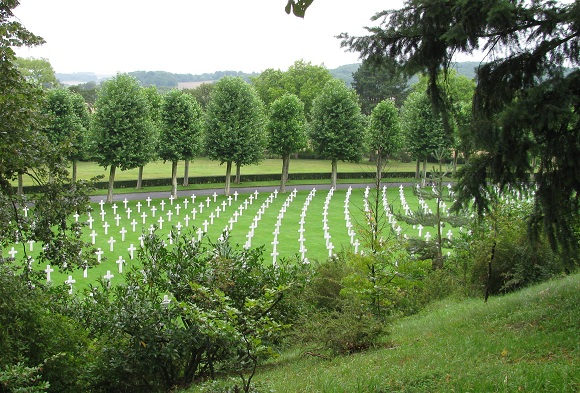
FR: Can you tell us about the reaction of the Roosevelt family to the news of Quentin’s death and the bond it created between the family and France after that?
C.S-H.: President Roosevelt was informed at Sagamore Hill [his home] on the morning of July 17. The reaction of the parents before the press and before the American people was one of great reserve and great dignity. They saluted Quentin’s courage and his sacrifice along with that of all parents whose sons were in danger or had died on the front in a foreign land. They wanted to share their pain with the American people and with parents who suffered as they did. Quentin’s father and mother didn’t ask for any more compassion than ordinary citizens.
In private the shock was violent. It was a shock of the ideals on which Theodore and Edith had built their lives confronted with the reality and pain of Quentin’s death. It’s possible that Theodore couldn’t stand the sense of guilt concerning Quentin’s tragic end. He was devastated. Something was extinguished in Theodore’s heart with Quentin’s death. His family, those close to him and he himself recognized it. The “Lion,” as his family called him, died six months later at the age of 60.
American troops liberated the area of Chamery and discovered Quentin’s tomb several days after his death. His parents wanted Quentin’s remains to stay buried there where he had fallen, and the authorities accommodated their desire.
Early in 1919, Quentin’s mother came to meditate on his tomb. The former First Lady had a fountain built in Quentin’s memory in the village of Chamery.
[Editor’s note: Quentin’s oldest brother Theodore Roosevelt Jr. died during the Invasion of Normandy 1944. After the creation of the Normandy American Cemetery above Omaha Beach, the Roosevelt family sought and obtained permission to have Quentin’s remains exhumed from Chamery and buried beside those of his brother. ]
FR: Beyond the personal story of his engagement in the war and the family tragedy of his death, how do those events fit in with the larger narrative of the war and why do you consider them significant?
C.S-H.: Quentin’s life, his birth, his personality, his intellectual abilities, his charisma and his humor formed an exceptional individual and someone who was extremely likable; he would undoubtedly have made his mark on America’s political or social landscape. He considered himself as someone who was very ordinary yet he had many uncommon qualities.
There’s a tragic and romantic dimension to his destiny about which he had a premonition. He went through very dark phases of depression but he felt that he had a mission that he could not and would not escape. That sentiment appears repeatedly in the letters to his fiancée Flora Payne Whitney. He belongs to a generation that expressed a pressing desire to fight for ideas. It gives pause to consider today the consensus at the time around the determination and the will to fight to the death that invaded the entire society, whatever the price may be. He was only 20 years old yet his letters reveal great maturity.
Reading his letter we can imagine someone for whom friendship was precious. His comrades-in-arms, the soldiers and the mechanics under his orders were unanimous in their great appreciation and respect for him. It’s difficult to fake your personality when death is lying in wait at every mission. Quentin belongs to the collective memory as do all those pilots who died in aerial combat.
He was undoubtedly the most famous American victim of the First World War.
Crushed by his destiny, by the war and by the events that engulfed the world, he would have belonged—had he not carried the Roosevelt name—to the thousands of forgotten aviators and aces who, like Quentin, wanted to bring an end to this war and to its butchery.
[Editor’s note: Regarding American WWI pilots who were killed in action, see also this information about the Escadrille Lafayette Memorial near Paris.]
One of his favorite expressions was “noblesse oblige,” something that defines him well; he carried a famous name that personified courage, it gave him responsibility, and he assumed it with nobility.
He embodied the quote from Theodore Roosevelt engraved on Quentin’s fountain in Chamery: “Only those are fit to live who do not fear to die.”
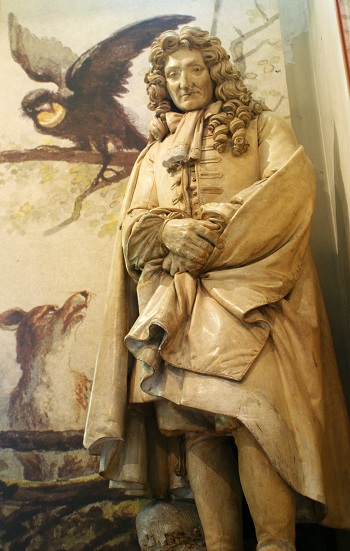
FR: How did you, as an expert on Quentin Roosevelt, come to be chief curator and director of a museum dedicated to Jean de La Fontaine? What brought you to the La Fontaine Museum?
C.S-H.: It’s because I’m director of the Jean de La Fountaine Museum in Château-Thierry, which is labeled “Musée de France” and “Maison d’écrivain” (Writer’s House), that I became interested in Quentin Roosevelt. My approach was essentially literary. His character emerged through a reading of his letters and through the archives.
Jean de La Fontaine was born in Château-Thierry. The museum occupies a 16th-century home that once belonged to his family and is listed as a Historical Monument. It’s just received from the Ministry of Culture the label “Maison des Illustres” [designating a home of someone “illustrious” or renown]. Restoration of the façade has just been completed.
La Fontaine is one of the great poets of the French literature. He lived in the 17th century, the century of Louis XIV, who both admired and was wary of La Fontaine’s genius. Great artists have illustrated his fables and tales: Fragonard, Oudry, Chagall, Dali, etc.
The museum has collections of exceptional paintings and miniatures as well as a library devoted to the writer.
Quentin knew French literature, including La Fontaine and La Bruyère, and had visited France in his youth. He had been impressed by the Louvre. In his letters he quotes authors in French. Through his education he had a command of French both spoken and written.
FR: English-speakers are especially familiar with Aesop’s fables but few know those of La Fontaine. In what way would the La Fontaine Museum be interesting for those who don’t know the writer’s work?
C.S-H.: Aesop’s fables are known in Anglo-Saxon literature and are found in La Fontaine, whose own work they inspired. The 17th century is the century of fables and tales that were showcased in French literature and at the Court of Louis XIV
La Fontaine uses animal anthropomorphism, putting to the forefront animals such as the fox, the wolf, the hare, the frog, the cat, the town rat and the country rat. That animal world is also the key to the success of Walt Disney, who adapted fables, fairy tales—stories with a moral component, often inspired by European literature. Among his sources of inspiration were the fables of La Fontaine.
The mouse known around the world, Mickey, sticks the tip of his snout into La Fontaine’s animal world. As with La Fontaine, the purpose is to permeate the imagination of children and adults, to get around censures and to give lessons in morality by using animals to give a message or to make situations less alarming.
Walt Disney’s The Tortoise and the Hare, a short film from Silly Symphonies released in 1935, was inspired by a fable that Jean de La Fontaine wrote for the king’s son.
There was a before and an after La Fontaine in literature just as there’s a before and after Walt Disney for their adaptation to the movies. Both are unequaled and incomparable. The fables and the ideals that they convey, such as courage, know no borders and are a bond between our two cultures.
Christiane Sinnig-Haas is the chief curator and director of the Musée Jean de La Fontaine in Château-Thierry. She is founder of the Association pour le Musée Jean de La Fontaine and vice president of the network of Writers’ Houses in the Picardy region.
The responses in this written interview, originally in French, are the copyright of Christiane Sinnig-Haas, 2012. Translation by Gary Lee Kraut.


Interesting article concerning Quientin Roosevelt, Christiane Sinnig-Haas and Jean de La Fontaine. Thank you.
John S. Koontz
Hi – May I recommend my 2014 book, “Quentin and Flora – a Roosevelt and a Vanderbilt in Love during the Great War?” It’s available in France as a Kindle e-book at Amazon.com. Thank you.
Hi Chip. Do you know if Flora ever came to France after Quentin died. Did she visit his tomb? Thanks. Gary
Here is an excerpt from my book, p. 199 of the print version: “There is no evidence that Flora ever visited Quentin’s grave, even though she journeyed to France in August, 1919. She sailed with her aunt, Dorothy Straight, who had recently lost her husband. According to [author] B. H. Friedman, Flora spent her days hobnobbing in Paris with artists who knew her mother, and went shopping for Chanel and Poiret fashions.
In a way have to wonder why TR and Quentin were so hot and bothered to go “fight the Hun” , although I realize their family connections of the NY rich and Boston Brahmins to have something to do with it. Yea , they all have financing through the Bank of England for much of their Chinese trade and “Mainfest destiny” but never understood the Anglophilia Dang, Teddy married a southern girl and even that didn’t do any good LOL.
A couple notes from quotes ” despite problems with his back and his sight.” OMG, it is a sad thing that nobody disabused of him of the idea of being a fighter pilot or did not totally fight hard to keep him from that profession. Eyesight was perhaps the most vital trait for a fighter pilot to have, Amazed that multiple people did not stop or manage to convince him or have his family simply “lock him up” instead of “dying” as any competent fighter pilot of the time would have wasted no words saying otherwise . But being young , brave and rich enough not having to listen to anyone, well see what happens . Well , bravery does run with young and dumb so i can’t fault him for it , but somebody wiser and skilled like more than a few fighter pilots by then should have told him to fix machines not fight them, especially if you dont have good eyesight.
Interesting article and impressive, glad to see some people still interested in real history and of some the Americans who were a part of it